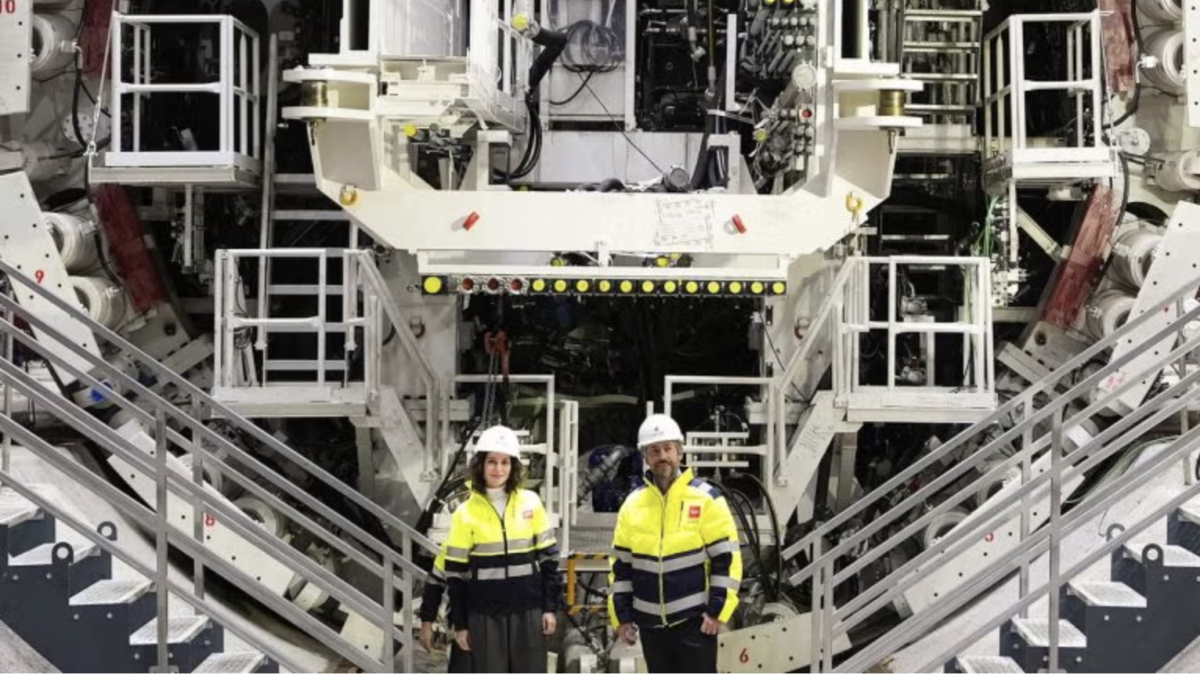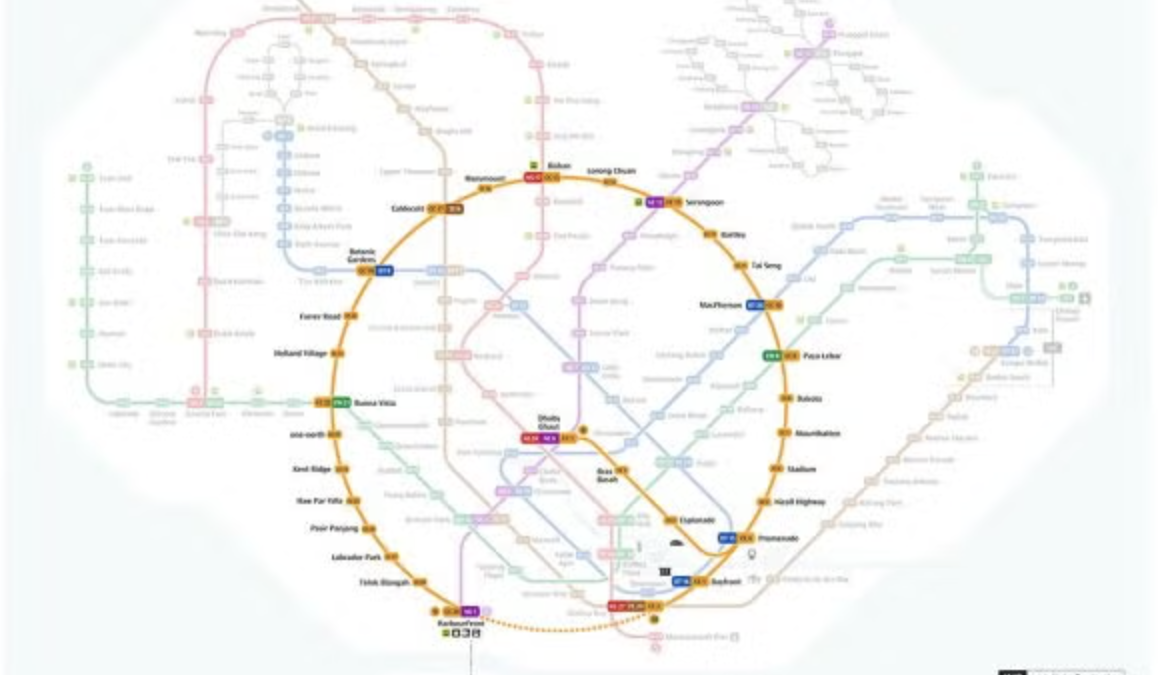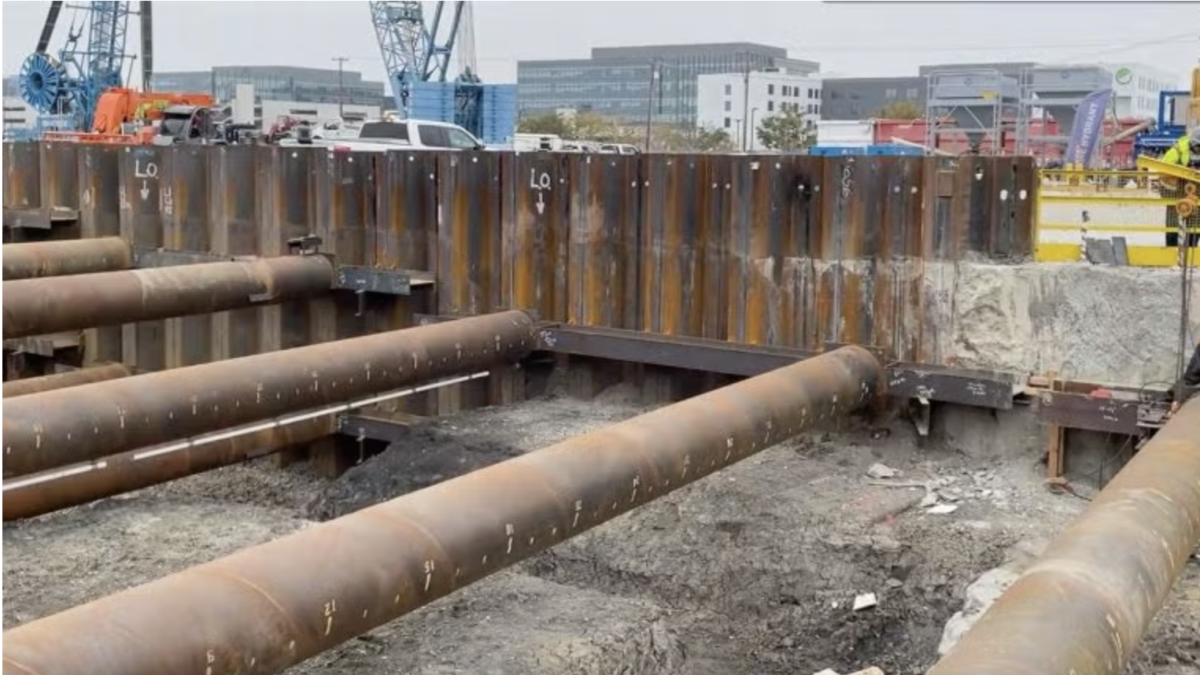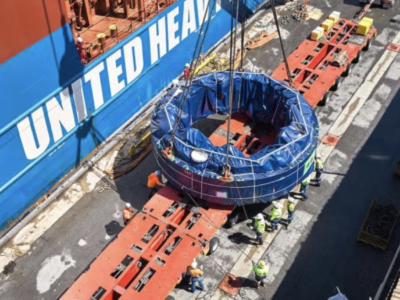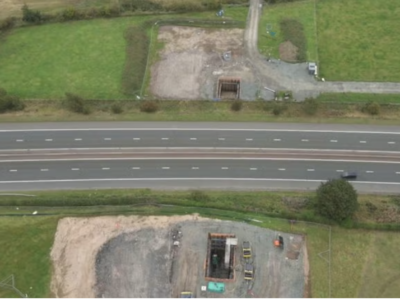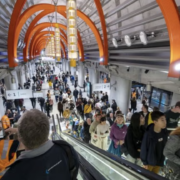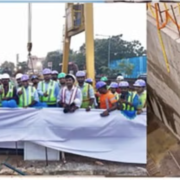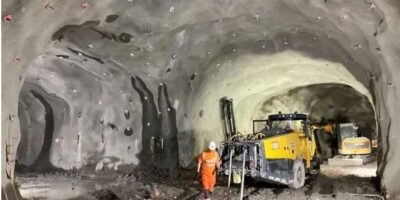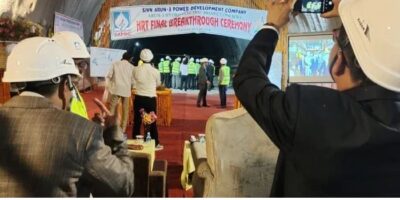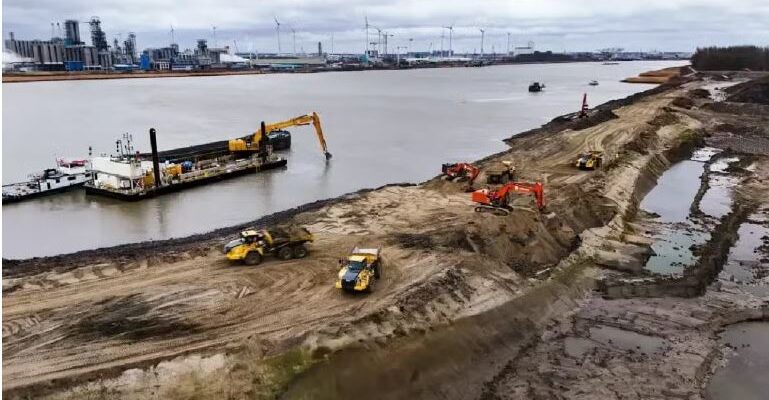
As a part of the Oosterweel project, for the construction of the Scheldt tunnel the old Scheldt dyke on Antwerp’s Left Bank has been breached by the TM COTU consortium.
While the responsibility of delivering the Scheldt tunnel is up to the TM COTU (Tijdelijke Maatschap Combinatie Oosterweeltunnel) consortium that is launched by Lantis, this consortium comprises Belgian construction companies BESIX, Stadsbader Contractors, DEME, and Jan De Nul.
Completing the Antwerp Ring Road construction, the breaking of the Scheldt dyke represents an important step forward in the Oosterweel link project.
In order to facilitating the first tunnel element, which is scheduled to be transported from Zeebrugge to Antwerp later this year, TM COTU has dug 400m of the existing structure.
The intetion is to linking the tunnel element to the other tunnel element, which is currently under construction on the Left Bank, and the planned date for it completion is this summer.
According to Flemish Minister of Mobility and Public Works Annick De Ridder: “We are taking another crucial step in the realisation of the Scheldt tunnel and the Oosterweel project, which is often referred to as the construction site of the century. The Scheldt tunnel is a key link in completing the Antwerp Ring Road on the north side. These infrastructure works are essential for Flemish mobility, liveability, and economic development, and go hand in hand with ecological enhancement. By relocating the dyke, we are also creating valuable natural spaces.”
The Scheldt tunnel is due to commence on the Left Bank near Sint-Annabos and emerge on the Right Bank at the future Oosterweel junction and the Canal Tunnels.
Considering that protecting the tunnel from the strong Scheldt currents that could cause structural damage, was important, through a controlled pumping system, a part of the construction site on the Left Bank was carefully flooded in December prior to the breaking of dyke.
With the dyke broken, the tunnel is now officially in the River Scheldt, and the remaining eight tunnel elements have been constructed at a dedicated dry dock in Zeebrugge.
Before being submerged in their final position, the tunnel elements are going to be transported to Antwerp through the North Sea and the Scheldt from this summer.
The determined date for completing the entire tunnel structure is this year-end and is planned to be open to cyclists in 2028, with motorised traffic to follow in 2030.
Recently, TM COTU has built a new elevated dyke 300m inland, replacing the old dyke, which is 2.5m higher than the old one and serves as a protective barrier.


